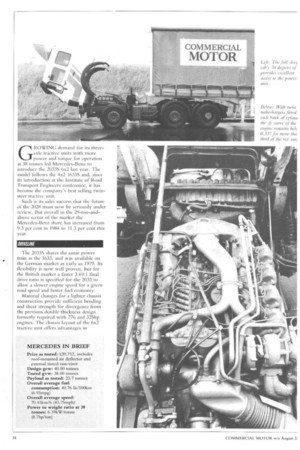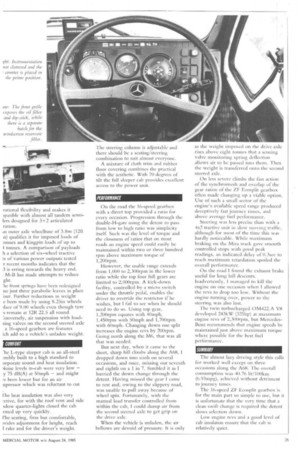BR! VU IMI
Page 26

Page 27

If you've noticed an error in this article please click here to report it so we can fix it.
The 2033S shares the same power train as the 1633, and was available on the German market as early as 1979. Its flexibility is now well proven, but for the British marker a faster 3.69:1 final drive ratio is specified for the 2033 to allow a slower engine speed for a given road speed and better fuel economy.
Material changes for a lighter chassis construction provide sufficient bending and shear strength for divergence from the previous double thickness design formerly required with 276 and 325hp engines. The chassis layout of the 6x2 tractive unit offers advantages in rational flexibility and makes it ipatible with almost all tandem sem lers designed for 3+2 articulated ration.
in outer axle wheelbase of 3.8m (12ft n) qualifies it for imposed loads of ;onnes and kingpin loads of up to tonnes. A comparison of payloads h a selection of six-wheel tractive ts of various power outputs tested r recent months indicates that the 3 is erring towards the heavy end. M-B has made attempts to reduce .ght.
he front springs have been redesigned 1SC just three parabolic leaves in place bur. Further reductions in weight e been made by using 8.25in wheels dace of 9.00 wheels even though tyre
s remain at 12R 22.5 all round. onversely, air suspension with loadsing valves on the second steered axle a 16-speed gearbox are features ich add to a vehicle's unladen weight.




































































